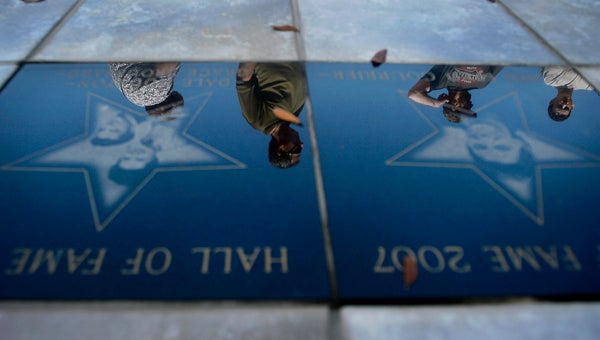LSU comes up with fix for health cuts
Published 11:53 pm Friday, July 27, 2012
BATON ROUGE (AP) — LSU will stitch together some patchwork funding to keep its safety net hospitals open and lessen the blow of budget cuts that threatened to shutter facilities, university health care leaders announced Friday in an effort to diminish fears of widespread service closures.
Plans outlined to the Louisiana State University Board of Supervisors will cut about $50 million from public hospitals and clinics, rather than the more than $300 million that had been expected, in the budget year that began July 1.
LSU’s hospitals in Lake Charles and in Tangipahoa Parish — W.O. Moss Regional Medical Center and Lallie Kemp Regional Medical Center — will bear the heaviest cuts.
To protect some services and medical training, LSU will reduce spending to recruit faculty for training programs, doctors are taking less money for their contracts and equipment purchases are being delayed. Hospitals will use that money to draw down federal health care matching cash through the Medicaid program and offset cuts.
But these are only stopgap measures for the current year while university leaders work on a long-term plan to cut costs across the 10-hospital system that cares for the poor and uninsured and that trains many of the state’s doctors and health care workers.
“Most of the strategies are not renewable. They do, however, buy us some time,” said LSU’s vice president for health affairs, Fred Cerise.
Even with the lessened cuts, some services still will be eliminated.
Outpatient visits are expected to shrink by more than 78,000 because of the reductions. More than 300 jobs will be cut. Cerise acknowledged some uninsured people whose outpatient services are being shut down simply won’t get care.
“I don’t think it’s reasonable to believe those are going to be absorbed by other facilities,” he said.
At Lallie Kemp, cardiology and surgery services, infectious disease treatment and the intensive care unit will be shuttered. Non-patient care staff will be cut by 40 percent. Oncology, gynecology and podiatry services will shrink. Nearly 35 percent of the hospital’s budget is being removed.
In Lake Charles, inpatient surgery services will be reduced, along with ICU care.
An operating room in the university’s Baton Rouge facility will be closed, along with two operating rooms in Houma’s hospital. The Lafayette hospital will lose some of its clinics, while obstetric services will be eliminated in Monroe.
Gov. Bobby Jindal’s administration stripped $127 million in state dollars from the public hospital system as part of a series of Medicaid cuts forced by a congressional funding reduction. If LSU hadn’t found some dollars to offset the gap, the reduction would have grown to $329 million with lost federal matching money.
To make the numbers work, the university-run health care system is relying on a series of complex financing maneuvers to maximize the system of federal matching dollars while also delaying contracts and costs that can be put off temporarily.
With the budgeting changes, Cerise said the hospitals will have less than a week of cash flow at a time.
LSU board members asked for a plan that kept all 10 hospitals open while protecting graduate medical education, so Cerise said the cuts fell most deeply on hospitals that weren’t involved in the training programs.
He said university officials will try to coordinate with local health care facilities to pick up some of the care being lost.
The cuts begin Monday.
“We’re not going to cut off services abruptly to people who have appointments scheduled, where we can,” Cerise said.
Though services are shrinking, members of the Board of Supervisors said the cuts could have been much worse and praised Cerise and other health care leaders for finding ways to offset many the deep reductions feared.
“Our mission of teaching, training and research has been protected,” said board member Bobby Yarborough.
Lawmakers have questioned why the Jindal administration levied such a large portion of the Medicaid cuts on the LSU hospitals, but board member John George said the administration had been a strong partner in working with LSU on ways to plug the budget gap.
“They’re not the enemy,” said George, a Jindal appointee to the board.
More cuts are looming if LSU doesn’t find additional ways to shrink its costs long-term. The university is considering whether to sell or lease some of its facilities to private health care companies, in arrangements that could still allow for the medical training programs.






